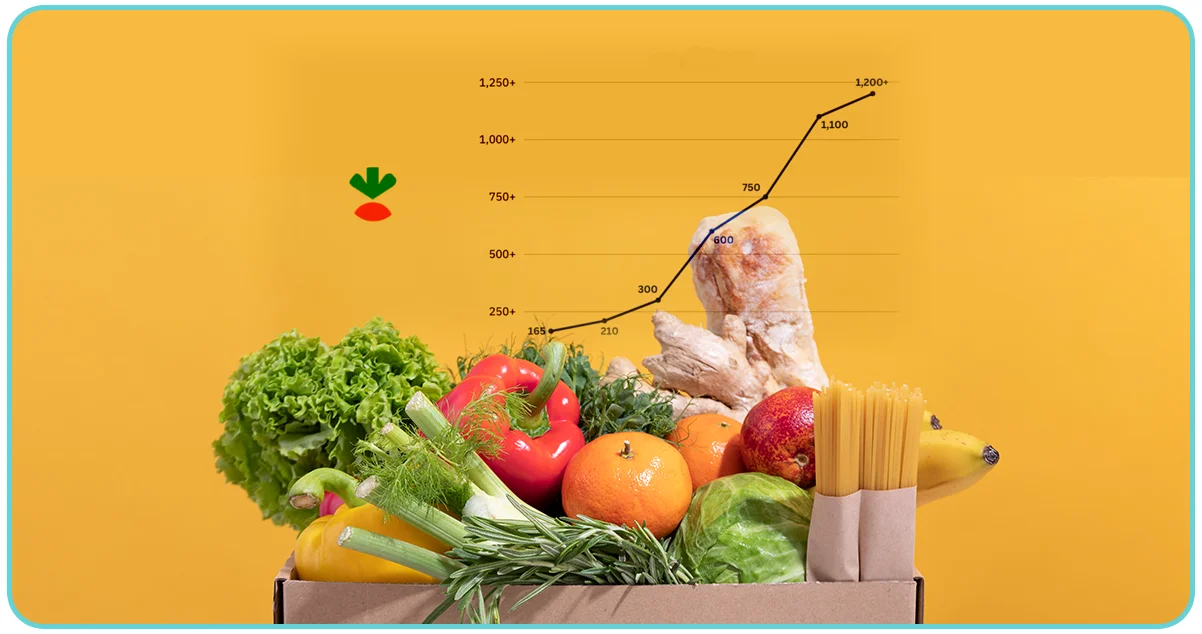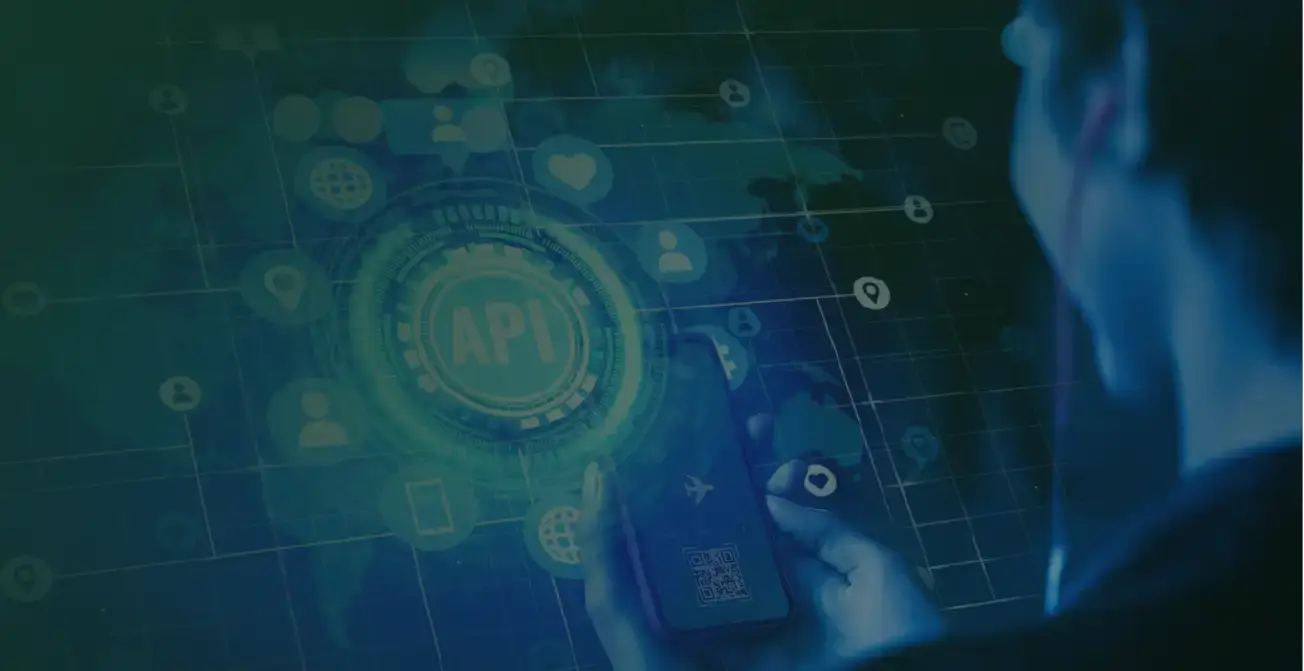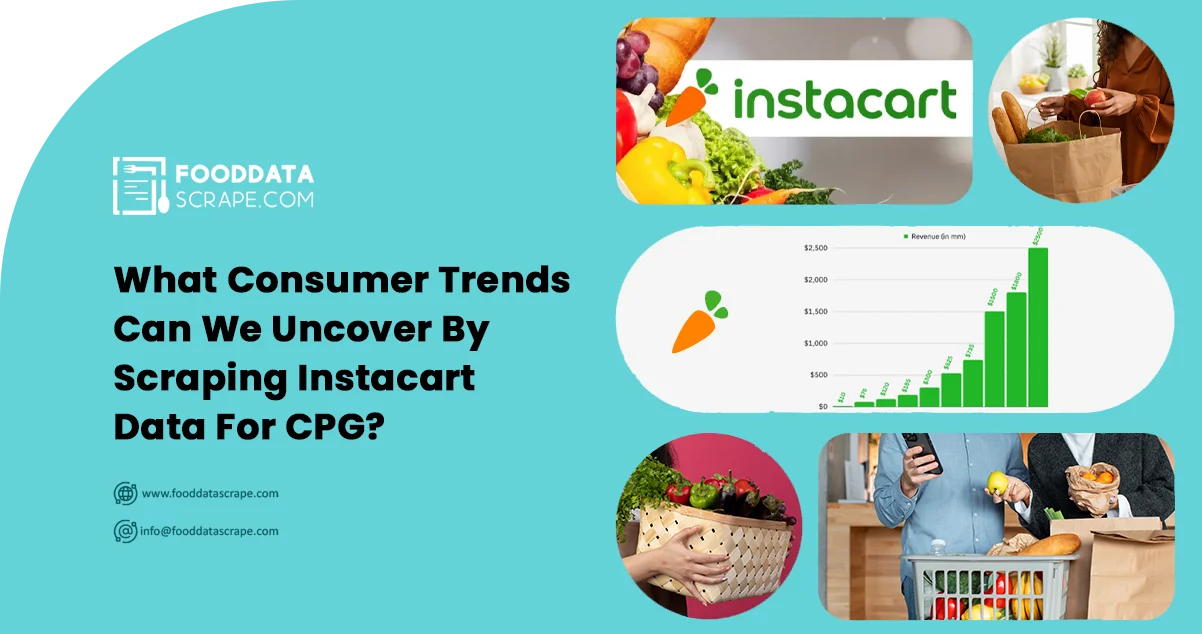In recent years, consumer data has increased exponentially. Understanding consumer behavior and deconstructing market dynamics in this dynamic consumer ecosystem rely significantly on data. As online shopping for groceries has experienced unprecedented growth, Instacart has become an enormous source of consumer insights. This article examines the primary utility of scraping Instacart data for CPG companies and the indispensable techniques in this exploitation.
Instacart has revolutionized the grocery shopping experience by offering an unmatched level of convenience and locating accessibility at the consumers' disposal. Instacart data allows consumer products and goods companies to have unrestricted access to consumer choices, shopping behaviors, and new market trends. Through such grocery data scraping, firms can make data-driven choices, allowing them to improve the quality of their products, adjust marketing strategies, and increase their business storage management.
Such a grocery data scraper is a golden mine of insights that lets CPG companies make agile and competitive business decisions in a volatile market environment where they are constantly competing for consumers' hearts.
Significance of Scraping Instacart Data for CPG
Through Instacart scraping data for CPG, companies gain access to endless insights that are instrumental for strategic planning. Here's a detailed breakdown of why Instacart data scraping services is significant:
Consumer Insights: Instacart picks up data in real-time on consumer behavior, for instance, what they purchase, what they love, and what they dislike. By analyzing these data, CPG companies can understand their target audience deeply; therefore, they can produce products and marketing strategies tailored to their audience.
Market Trends: Instacart data gives a complete overview of market tendencies, what products are trendy, seasonality, and new consumer choices. These insights allow CPG companies to gain a competitive edge by pinpointing areas for new product development or product line changes responding to these variations.
Competitor Analysis: A grocery data scraper gives CPG companies the opportunity to track their competitors' business, such as their price strategy, product selection, and consumer involvement. Companies can benchmark against competitors to find out where their competitive edge is and develop strategies to set them apart.
Inventory Management: Instacart data is very resourceful as it informs about product availability, stock levels, and demand patterns. By analyzing such data, CPG firms can optimize their inventory management processes, which include having just the right products in stock to cater to consumer demand while reducing excess inventory and related costs.
Marketing Effectiveness: Instacart can evaluate the effectiveness of marketing activities and promotions. By constantly monitoring sales trends before, during, and after marketing initiatives using the Instacart data scraper, CPG companies will be able to analyze their campaigns' influence and improve their strategies' effectiveness.
Customer Engagement: Instacart data contains data on customer interactions, such as product view count, review, and rating. This data analysis can give CPG companies an idea of consumers' minds, tastes, and needs to improve their products for customers' enjoyment.
Forecasting and Planning: Instacart's data can provide a framework for demand forecasting and sales planning. With historical sales data and trend analyses computed, CPG companies can easily predict the future and effectively schedule production to meet market demand efficiently.
Product Development: Instacart data can be used to direct product development strategies by highlighting market gaps or areas where consumer demands are not generally met. By being aware of consumer tastes and trends, CPG companies can create targeted innovations to present to the consumer market.
Scraping Instacart data for CPG enables companies to receive granular insights into consumer behavior, market trends, competitor performance, etc. By efficiently using such data, CPG companies will be able to accelerate growth, operate more efficiently, and outperform their competitors in the market.
Steps to Scrape Instacart Data For CPG

Extracting Instacart data for Consumer Packaged Goods (CPG) requires a series of procedures to guarantee the reliability and practicality of the collected data. Here's a detailed guide on how to scrape Instacart data for CPG:
Get familiar with Instacart's website structure first It is a prerequisite step to know Instacart's website structure before scraping its data. Find the exact spots on the website where clients can check on the needed information, like products listed, customer reviews, and order histories.
Choose a Scraping Tool or Framework Select among all the available web scraping tools and frameworks you are comfortable using and the one that meets your project necessities. To name just a few in regular use BeautifulSoup, Scrapy, Selenium, and Puppeteer. Ensure that the chosen tool can handle dynamic web pages and authentication if necessary.
Set Up Authentication If Instacart needs authorization to access sensitive data, like customer accounts or individualized recommendations, ensure these authentication parameters are included in your scraping script. It might include using the proper credentials and API tokens.
Identify Target Data: Decide which data points you will scrape from Instacart, including product names, descriptions, prices, ratings, reviews, and categories. Prepare a detailed table of target data fields to act as a guide for your scraping process.
Write Scraping Scripts:
- Write a scraping script using the tool or framework of your choice to extract data from Instacart's website.
- Use CSS selectors or XPath expressions to locate the HTML elements with the desired information extracted.
- Implement error-handling mechanisms to gracefully handle unforeseen scenarios.
Handle Pagination and Dynamic Content: Instacart's website could paginate the results or load the content dynamically as users scroll or engage with the page. Ensure that your scraping programs can manage pagination and dynamic content loading to permit the extraction of all relevant information from various pages or regions.
Test and Debug: Test your web scraping code to ensure it collects the intended data correctly without erroneous and inconsistent data. Troubleshoot any problems arising during the scraping process, such as missing data or abnormal actions, by looking at the HTML structure and refining the scraping logic if needed.
Monitor Rate Limits and Compliance: Remain aware of Instacart's rate limits and scraping policies to prevent your servers from overloading or violating the terms of service. Introduce rate limiting and throttling in your scraping machine to control a valid request frequency without causing disruptions.
Data Processing and Storage: The next step is to get the relevant data from Instacart and then process and clean it if necessary for further use during the analysis or storage. Rewrite scraped data into a structured format such as CSV, JSON, or a database for access and analysis by the downstream application.
Maintain and Update Scraping Scripts: Regularly maintain and update your scraping scripts to keep up with Instacart's changing web structure or policies. Watch for any updates or modifications that could affect the scraping process and tinker with all the necessary amendments for data extraction to continue.
By going through this sequence, you will be scraping Instacart data for CPG and using the insights to guide and inform your strategic choices and market analysis.
Conclusion:
Scraping Instacart data gives CPG companies an excellent chance to obtain valuable data for research, shedding light on consumer behavior, market trends, and competitor strength. Thanks to scraping technologies and advanced analytics, companies can collect intelligence data that can be turned into actions supporting product development, marketing strategies, and inventory management. Nevertheless, it is a must to resolve legal and ethical problems, stay compliant with Instacart's policies, and take care of data privacy. Through proper planning, well-thought-through implementation, and sustainable oversight, our Instacart data scraping service helps CPG companies become more agile, competitive, and responsive to the market's changing needs.
Are you in need of high-class scraping services? Food Data Scrape should be your first point of call. We are undoubtedly the best in Food Data Aggregator and Mobile Restaurant App Scraping, and we render impeccable data analytics and insights for strategic decision-making. With a legacy of excellence as our backbone, we help companies become data-driven, fueling their development. Please take advantage of our tailored solutions that will add value to your business. Contact us today to unlock the value of your data.






























































































